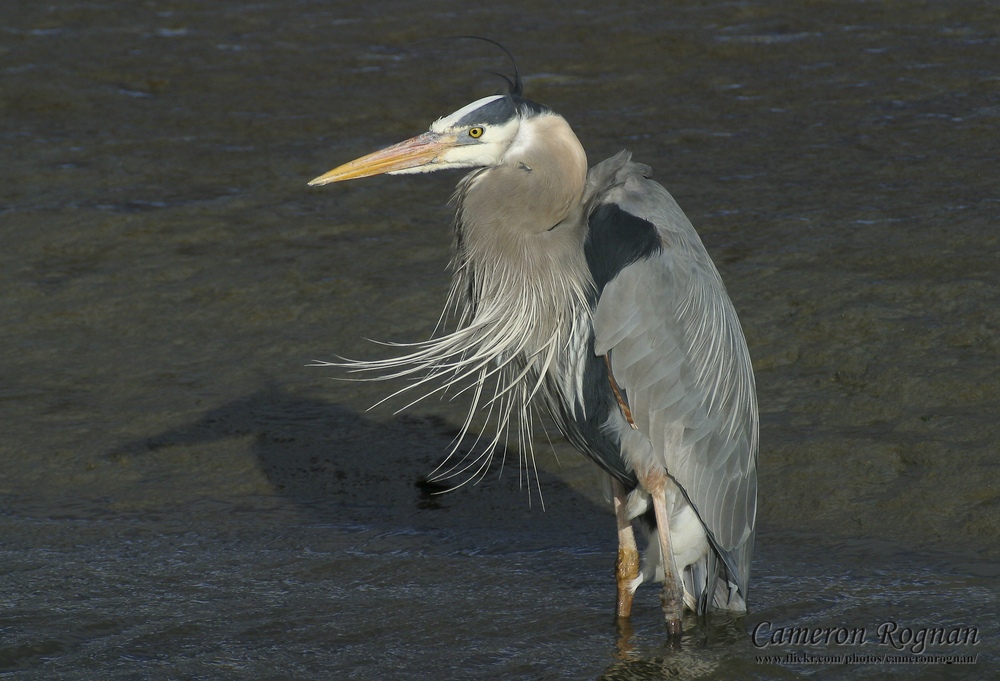Great Blue Heron
(Ardea herodias)
These nongame birds occur at desert and submontane elevations. Their population trend is unknown. Heronry sties are preferably located in trees near water, but herons have also been known to nest on the ground. The crucial period for nesting and brooding is from March to mid September.
Nests will be abandoned if the site is disturbed. Heronries are reused each year. Eggs are incubated for 28 days and the young fledge at 55-60 days of age. Fish are the primary food. Herons must be undisturbed at their forage areas.
